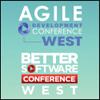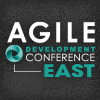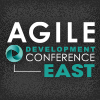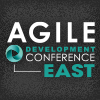 |
Video: Service Virtualization Enables Continuous Testing
Video
Build-test-release-deploy processes for today’s interdependent systems are commonly impacted by constraints associated with a staged test environment—for instance, the complexity and...
|
Wayne Ariola, Parasoft
|
 |
Test (and More) Patterns for Continuous Software Delivery
Slideshow
Top web companies employ continuous delivery of software to build and deploy systems faster and gain a marked competitive advantage. You can do it, too! Andy Singleton shares the patterns for testing in real time that result in more frequent and more reliable releases. He explains why...
|
Andy Singleton, Assembla
|
 |
Continuous Delivery at Ancestry.com
Slideshow
Continuous delivery is a practice that enables teams to release code at any time, based on changing business requirements. However, continuous delivery requires a substantial investment in infrastructure and possibly fundamental architectural changes to support the process.
|
Seng Lin Shee, Ancestry.com
|
 |
The Next Frontier of Agile: Journey to Continuous Delivery
Slideshow
Organizations are under pressure to release faster with higher quality, while business and technology environments are increasingly becoming more and more complex. How can you deploy great products quickly in such a challenging environment? Intuit, maker of TurboTax, is solving this...
|
Nicole Sweeney, Intuit & Martin Franklin, Intuit
|
 |
Better Security Testing: Using the Cloud and Continuous Delivery
Slideshow
Even though many organizations claim that security is a priority, that claim doesn’t always translate into supporting security initiatives in software development or test. Security code reviews often are overlooked or avoided, and when development schedules fall behind, security testing...
|
Gene Gotimer, Coveros, Inc.
|
 |
The Next Level of Agile: DevOps and Continuous Delivery
Slideshow
Mature agile organizations are introducing continuous delivery as a crucial step to realize their goal of delivering business value rapidly. Andrew Phillips highlights implementation issues about how agile development can fit with enterprise release management policies and governance needs. Andrew outlines proven practices and selection criteria for tools to help you address these issues. Then, he presents a DevOps case study demonstrating the continuous delivery process for building, packaging, deploying, and testing a complex application. Find out about deployment support for server and resource configurations, application binaries, database upgrades and rollbacks, messaging, and enterprise service buses. With the right tools and processes you can develop an open, extensible framework that supports additional services and platforms.
|
Andrew Phillips, XebiaLabs Inc.
|
 |
A Big Helping of DevOps with Career Advice on the Side
Slideshow
For decades-with the exception of agile-dev followers-the IT community has continued to build and protect its departmental silos. Project management, business analysis, development, testing, DB administration, and operations are just a few of the specializations that are carved out and institutionalized. Agile practices seek to eliminate the walls and empower people to deliver the highest value to the business. DevOps is the latest effort in this direction-bringing developers, testers, and operations together to replace their silos with a continuous collaboration pipeline. Paul Peissner introduces DevOps and explains how it is a key to transitioning from continuous integration (creating the finished software product immediately) to continuous delivery (making the product immediately available to users) and adding tremendous new business value.
|
Paul Peissner, CollabNet
|
 |
Transitioning to Kanban: From Theory to Practice
Slideshow
You're familiar with agile and, perhaps, practicing Scrum. Now you're curious about Kanban. Is it right for your project? How does Kanban differ from Scrum and other agile methodologies? From theory to practice, Gil Irizarry introduces Kanban principles and explains how Kanban's emphasis on modifying existing processes rather than upending them results in a smooth adoption. Instead of using time-boxed units of work, Kanban focuses on continuous workflow, allowing teams to incrementally improve and streamline product delivery. Explore how to move from Scrum to Kanban with new, practical techniques that can help your team quickly get better. Discover the use of cumulative flow diagrams, WIP (work-in-progress) limits, and classes of services. In a hands-on classroom exercise, you'll help create a value stream map, determine process efficiency, and experience techniques from the Kanban toolset.
|
Gil Irizarry, Yesmail
|
|
|
Massive Continuous Integration and Light-speed Iterations
Slideshow
Continuous integration (CI) has become a buzzword, with most engineering organizations claiming they've adopted the practice. However, the sad truth is that unreliable tests, long feedback loops, and poor configuration management block their efforts and minimize CI's potential benefits. Jesse Dowdle shares how AtTask radically redesigned its engineering pipeline and, through massive CI scaling, drove three days of testing to just minutes. Learn the pros and cons of different CI systems and how to integrate them with the cloud. Watch a live demo of AtTask's internal test and CI systems, which they’ve designed to make "Every commit a potential release candidate"-meaning that every commit is an iteration. Arm yourself with the talking points to sell massive CI to executives.
|
Jesse Dowdle, AtTask, Inc.
|
